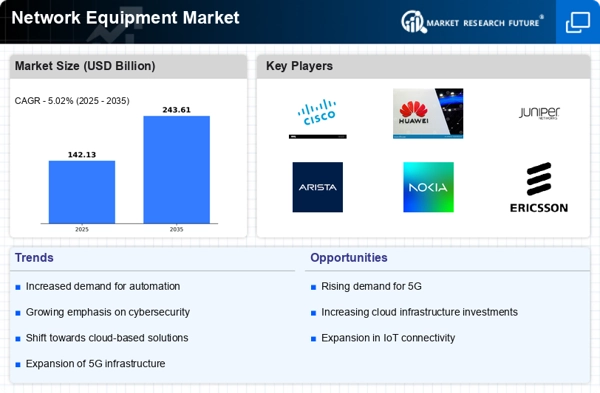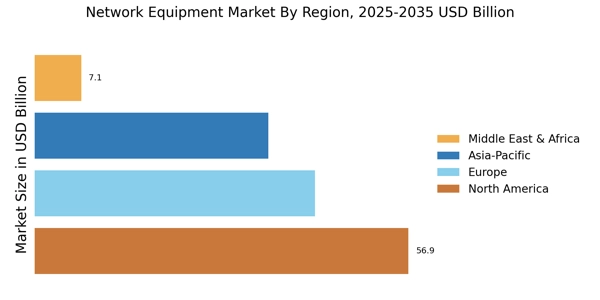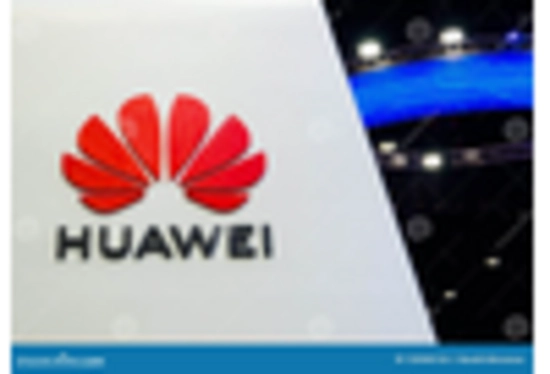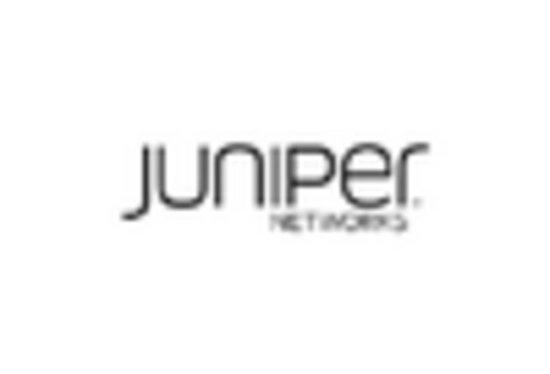Emergence of 5G Technology
The rollout of 5G technology is poised to revolutionize the Network Equipment Market. With its promise of ultra-low latency and high-speed data transfer, 5G is expected to enable new applications and services that were previously unattainable. Industries such as autonomous vehicles, augmented reality, and smart manufacturing stand to benefit immensely from this advancement. As telecommunications companies invest heavily in 5G infrastructure, the demand for compatible network equipment is likely to escalate. Market analysts project that the 5G infrastructure market could reach USD 47 billion by 2025, underscoring the transformative impact of this technology on the network equipment landscape.
Growing Focus on Network Security
As cyber threats become increasingly sophisticated, the emphasis on network security within the Network Equipment Market has intensified. Organizations are compelled to invest in advanced security solutions to protect their data and infrastructure from breaches. This trend is reflected in the rising demand for secure networking equipment that incorporates features such as encryption, intrusion detection, and threat intelligence. According to industry reports, The Network Equipment Market is expected to grow to USD 33 billion by 2025, indicating a strong correlation between security concerns and network equipment investments. Consequently, manufacturers are prioritizing the development of secure solutions to address these challenges, thereby driving growth in the industry.
Adoption of Internet of Things (IoT)
The rapid adoption of Internet of Things (IoT) devices is reshaping the Network Equipment Market. With billions of devices expected to be connected by 2025, the need for efficient networking solutions becomes paramount. IoT applications span various sectors, including healthcare, manufacturing, and smart cities, each requiring reliable and secure network infrastructure. The increasing volume of data generated by these devices necessitates advanced network equipment capable of handling vast amounts of information. As organizations seek to leverage IoT for operational efficiency and enhanced customer experiences, the demand for specialized networking solutions is anticipated to grow, driving innovation and investment within the industry.
Increased Demand for High-Speed Connectivity
The demand for high-speed connectivity continues to surge, driven by the proliferation of data-intensive applications and services. As businesses and consumers increasingly rely on seamless internet access for activities such as streaming, gaming, and remote work, the Network Equipment Market is experiencing significant growth. According to recent data, the global internet traffic is projected to reach 4.8 zettabytes per year by 2025, necessitating advanced networking solutions. This trend compels network equipment manufacturers to innovate and enhance their offerings, ensuring they can meet the escalating bandwidth requirements. Consequently, the industry is likely to witness a robust expansion as companies invest in upgrading their infrastructure to support faster and more reliable connections.
Shift Towards Software-Defined Networking (SDN)
The shift towards Software-Defined Networking (SDN) is transforming the Network Equipment Market by enabling greater flexibility and efficiency in network management. SDN allows organizations to programmatically manage their networks, facilitating rapid deployment of applications and services. This paradigm shift is particularly beneficial for enterprises seeking to optimize their network resources and reduce operational costs. As businesses increasingly adopt cloud-based solutions and virtualization, the demand for SDN-compatible equipment is expected to rise. Market forecasts suggest that the SDN market could reach USD 100 billion by 2025, highlighting the potential for growth and innovation within the network equipment sector as organizations embrace this technology.


















Leave a Comment